Written by: Emma Cyrus, Senior Copy, Content & Editorial Writer
Reviewed by: Benjamin Ibanez, General Manager & Interior Designer at FCI
Edited by: Zoona Sikander, Interior Design Writer & Social Media Content Creator
Persian rugs represent one of humanity’s most enduring art forms, with each pattern telling stories that span millennia. In my extensive work with discerning clients, I’ve witnessed how the right Persian carpet transforms not merely the aesthetic of a space, but its entire cultural resonance. These magnificent textiles serve as anchors of sophistication that speak to a deeper understanding of craftsmanship and heritage.
Persian rug patterns constitute a complex visual language – one that communicates regional identity, spiritual beliefs, and artistic tradition through symbols refined across generations of master weavers. For the sophisticated homeowner, understanding this language enhances not only appreciation of these exceptional pieces but also the ability to select carpets that resonate with personal aesthetic sensibilities whilst maintaining their investment value.
The distinction between authentic Persian patterns and contemporary interpretations lies not merely in their visual appearance, but in the cultural authenticity and craftsmanship integrity they represent. In an era where mass production threatens traditional arts, recognising genuine Persian design elements becomes essential for those seeking to invest in pieces that will enhance their interiors for decades to come.
The Enduring Allure of Persian Artistry
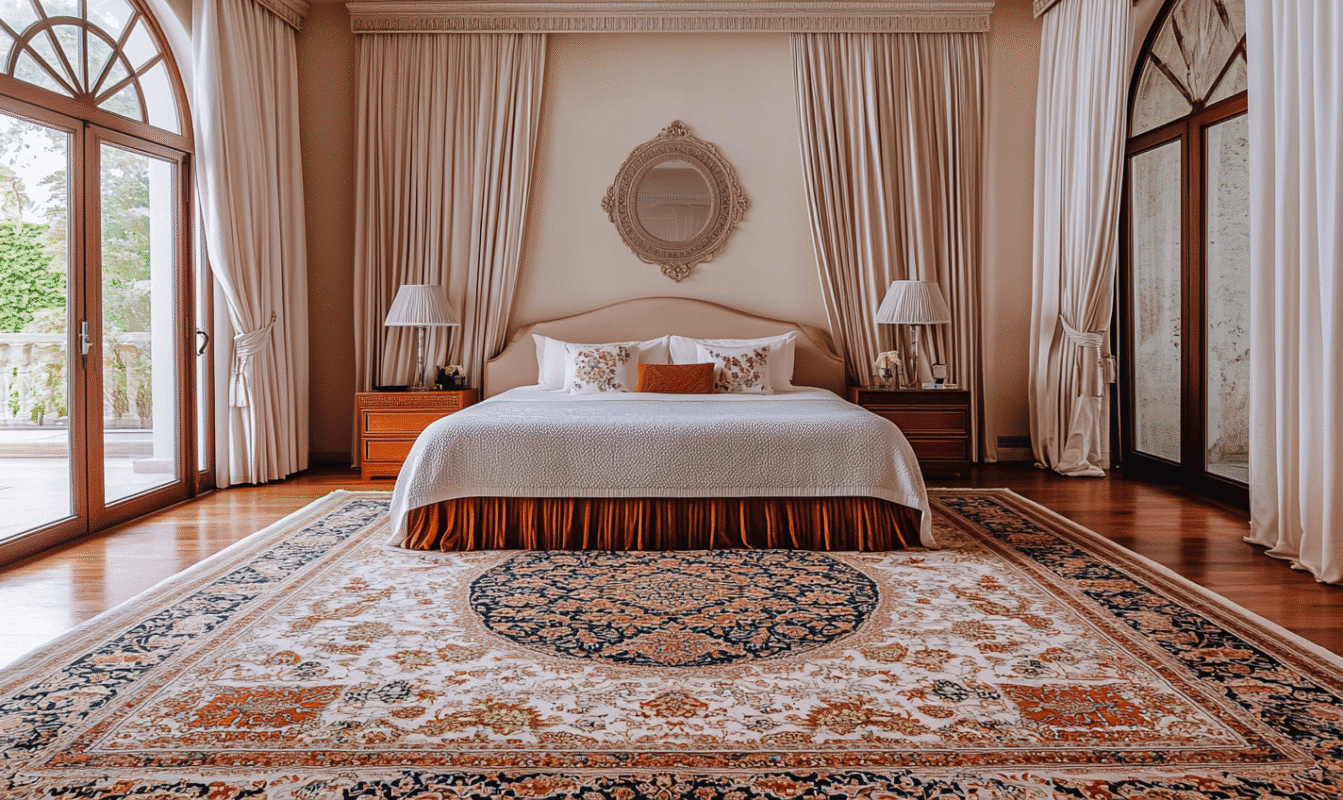
When one considers the pinnacle of floor coverings, Persian rugs invariably command attention. These magnificent textiles have graced the residences of royalty and connoisseurs for centuries, their intricate patterns telling stories of cultural heritage and artistic brilliance. For the discerning homeowner in Dubai, where luxury and heritage often intersect, Persian rug patterns offer both an investment in artistry and a statement of refined taste.
The true value of these masterpieces lies not merely in their aesthetic appeal but in their remarkable craftsmanship. Each Persian rug represents thousands of hours of meticulous handiwork, with some of the finest examples containing up to 10,000 knots per square inch. This level of detail creates textiles of exceptional durability and beauty that mature gracefully over generations, often increasing in both character and value.
Decoding Traditional Persian Motifs
Traditional Persian rug patterns design elements follow established conventions that have evolved over centuries, each carrying symbolic significance and regional character. Understanding these patterns allows collectors to appreciate the cultural narrative woven into each piece.
Floral and Curvilinear Patterns
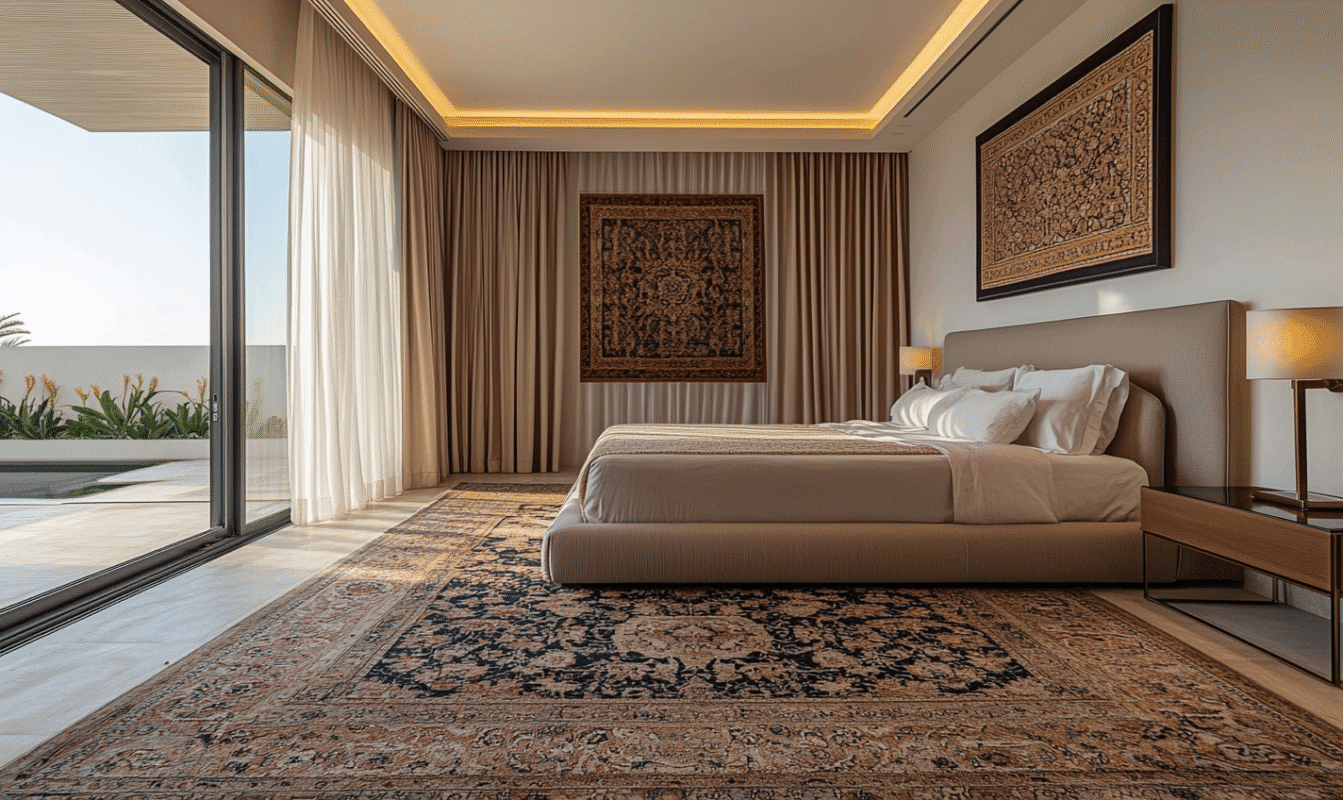
The Isfahan and Tabriz traditions feature stunningly detailed floral motifs, often arranged around a central medallion. These patterns exhibit extraordinary precision, with flowing arabesques and delicate botanical elements that create a sense of natural abundance and harmony.
The colour palette typically employs rich blues, reds, and ivory, creating a sophisticated visual experience that complements both classical and transitional interiors.
Geometric Persian Rug Patterns
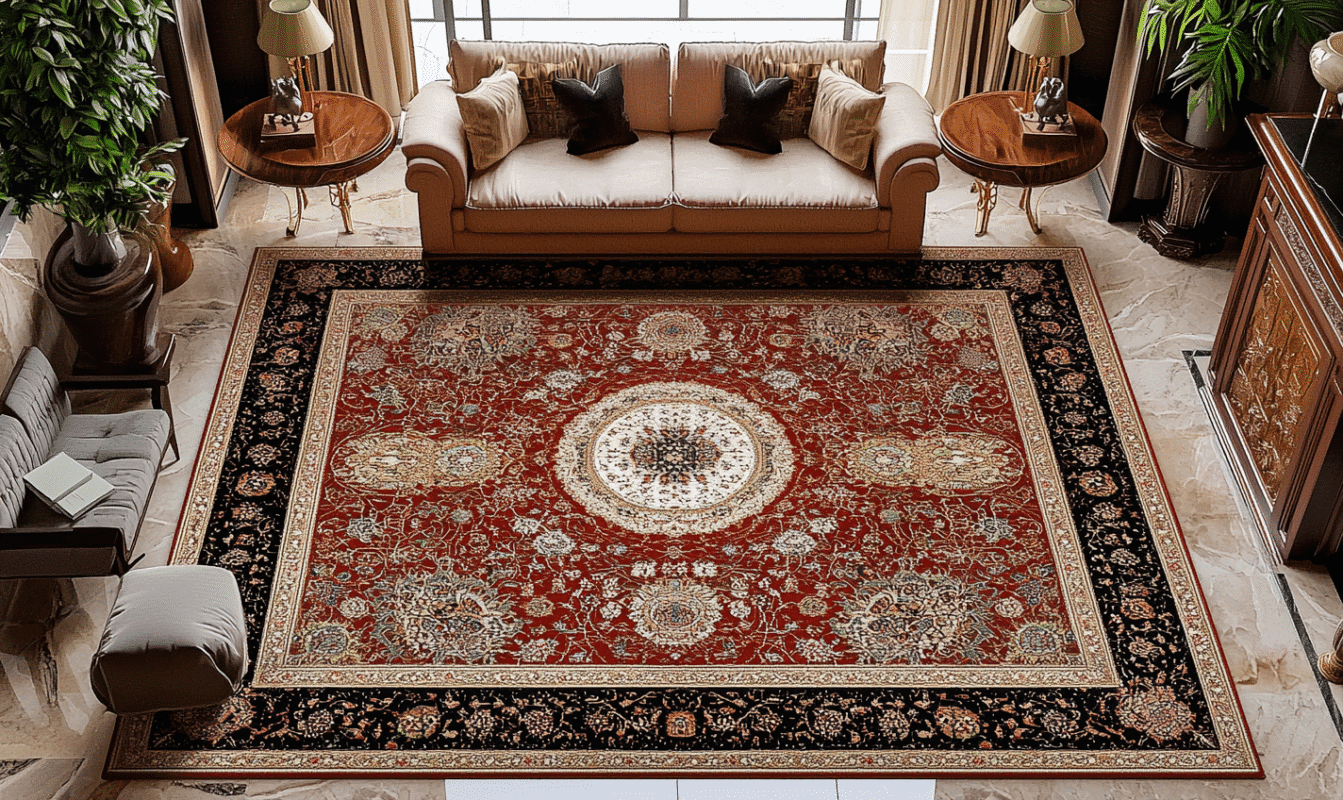
The Herati pattern, often called the “fish” design, represents one of the most recognisable geometric Persian rug patterns. This motif features a central diamond with curved leaves extending from each side, creating a mesmerising repetitive design. Tribal rugs from regions such as Shiraz and Qashqai often showcase bold geometric configurations in vibrant hues, presenting a more assertive aesthetic that works beautifully in contemporary spaces.
The Gabbeh tradition offers a more minimalist approach to geometric Persian rug patterns, with simplified forms and substantial negative space. These pieces have gained considerable popularity in modern design contexts for their ability to bridge traditional craftsmanship with contemporary sensibilities.
The Language of Patterns: What Your Rug Communicates
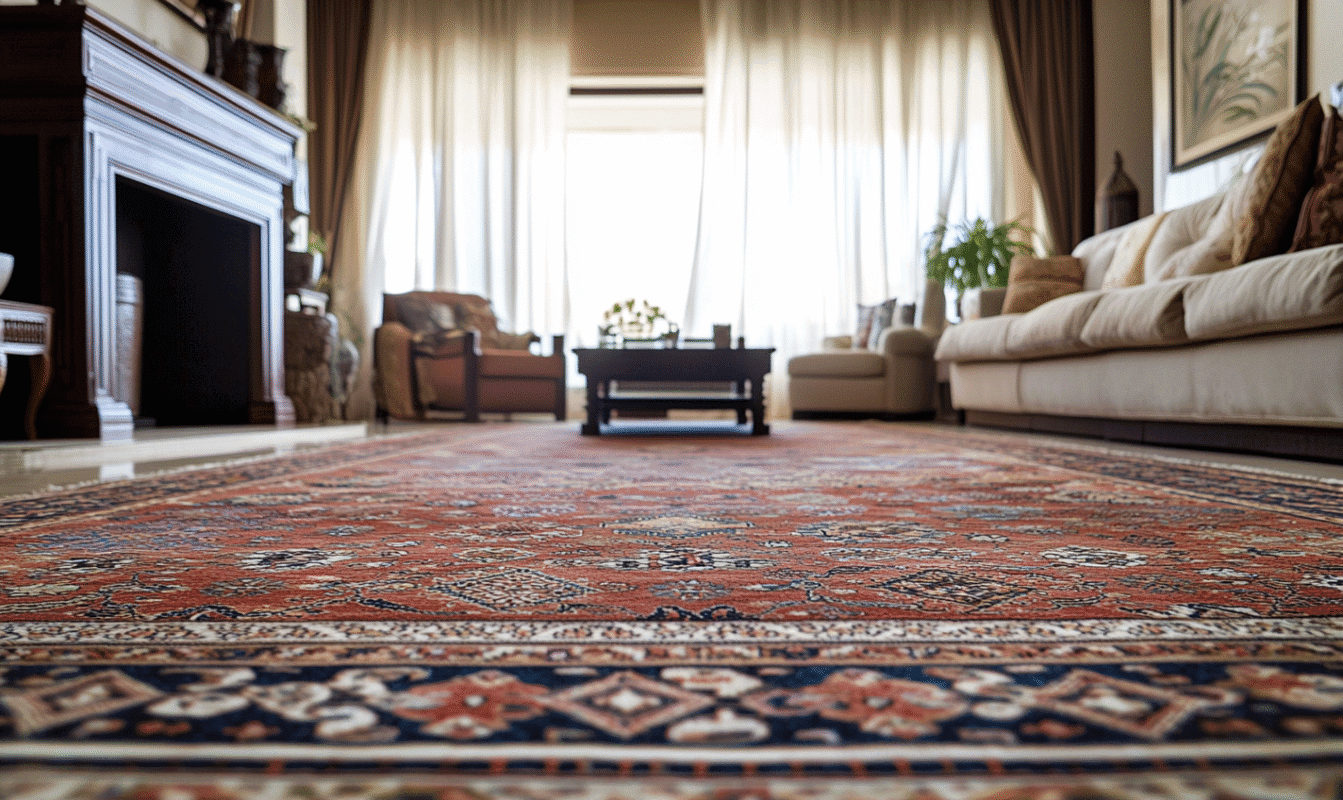
The selection of a particular Persian rug patterns design makes a distinct statement about one’s aesthetic sensibilities and understanding of cultural heritage. Consider these interpretations of various patterns:
- Medallion Designs: Suggest classical formality and appreciation for symmetry, ideal for formal reception rooms or dining areas where a centred focal point enhances the architectural harmony.
- All-over Patterns: Create a sense of infinite continuation, bringing visual texture without demanding attention, suitable for spaces where other elements take precedence.
- Garden Designs: These “paradise” patterns symbolise the traditional garden divided into four quadrants, representing abundance and tranquillity, perfect for spaces dedicated to contemplation or relaxation.
- Prayer Designs: Featuring a mihrab or arch motif, these pieces carry spiritual significance and often work beautifully in studies or private retreats.
Understanding this visual language allows homeowners to select luxury rugs that not only complement their décor but also reflect their personal narrative and values.
Contemporary Interpretations of Heritage Patterns
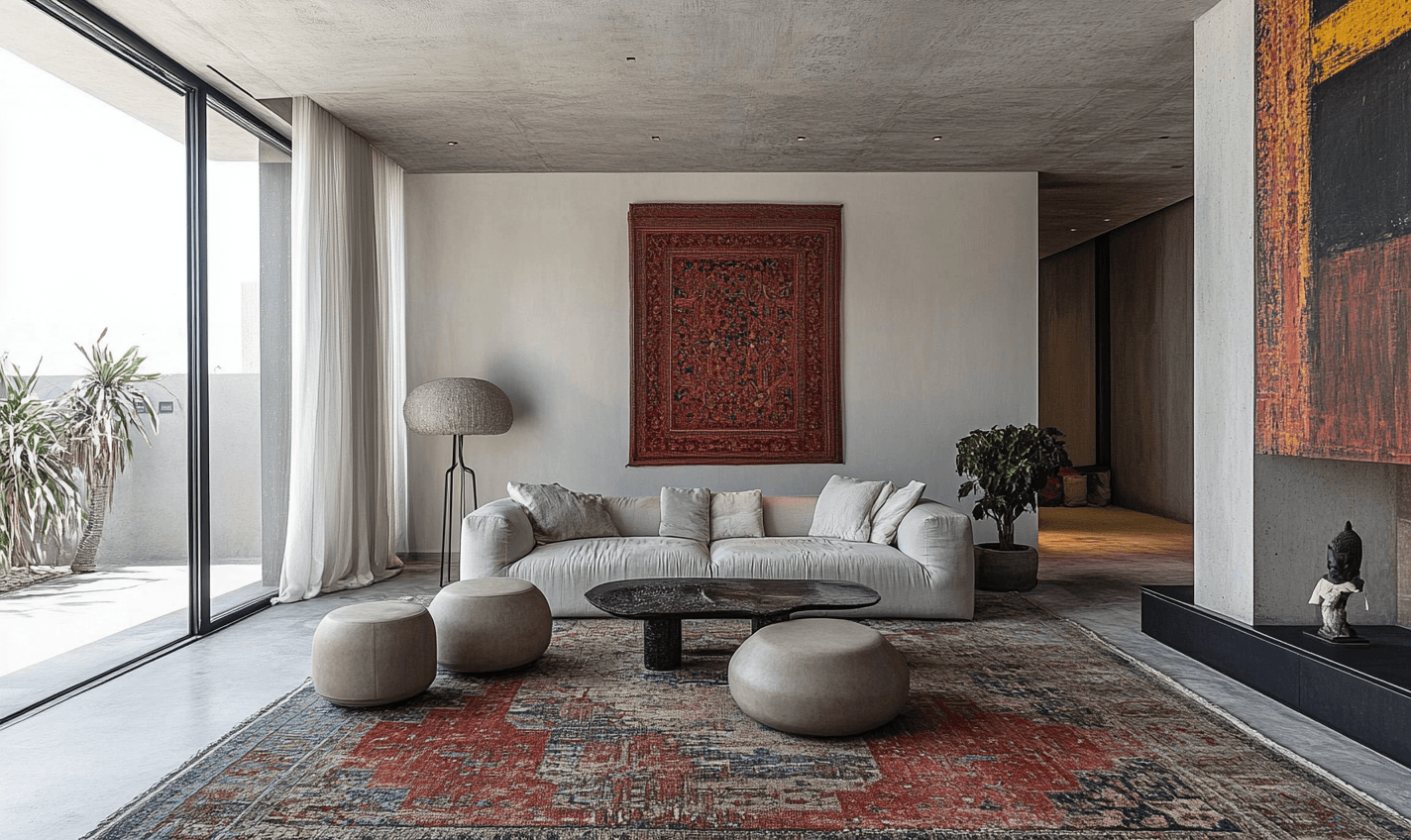
The evolution of Persian rug patterns design continues through the work of contemporary artisans who honour tradition while embracing innovation. Modern interpretations often feature:
- Deconstructed traditional patterns that maintain cultural references while introducing abstraction
- Unexpected colour palettes that recontextualise classic motifs for contemporary interiors
- Simplified versions of intricate designs that preserve essential elements while embracing minimalism
These contemporary pieces allow collectors to introduce cultural heritage into modern environments without compromising design coherence. In Dubai’s sophisticated residences, where tradition often meets cutting-edge architecture, these innovative interpretations of Persian rug patterns create compelling design narratives.
Selecting the Ideal Pattern for Your Space
The choice of pattern should respond to both the architectural context and your personal aesthetic. Consider these principles when selecting luxury rugs for your residence:
Scale and Proportion
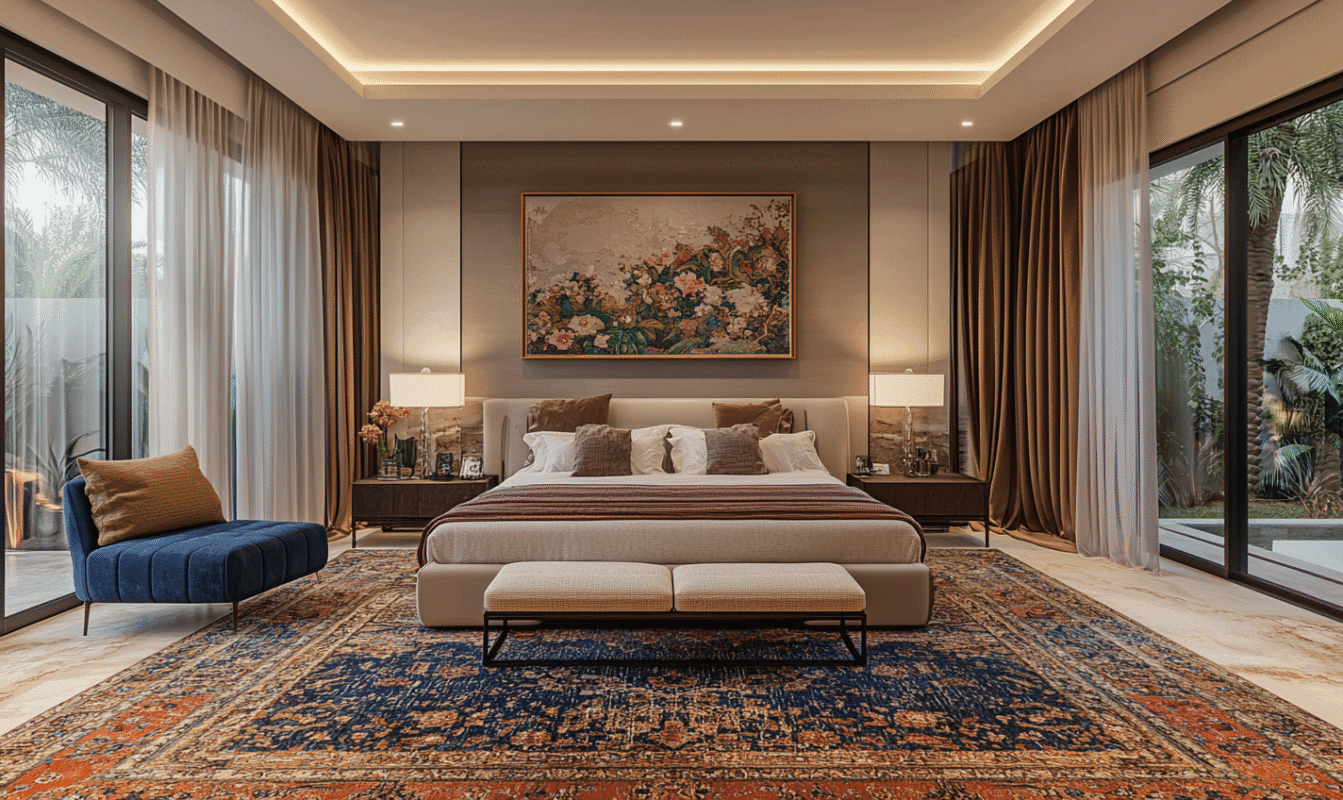
The complexity and scale of Persian rug patterns should correlate with the dimensions and character of your space. Expansive rooms with substantial architectural features can accommodate more elaborate designs, while smaller or more intimate settings may benefit from less complex patterns that don’t overwhelm the eye.
Colour Harmony
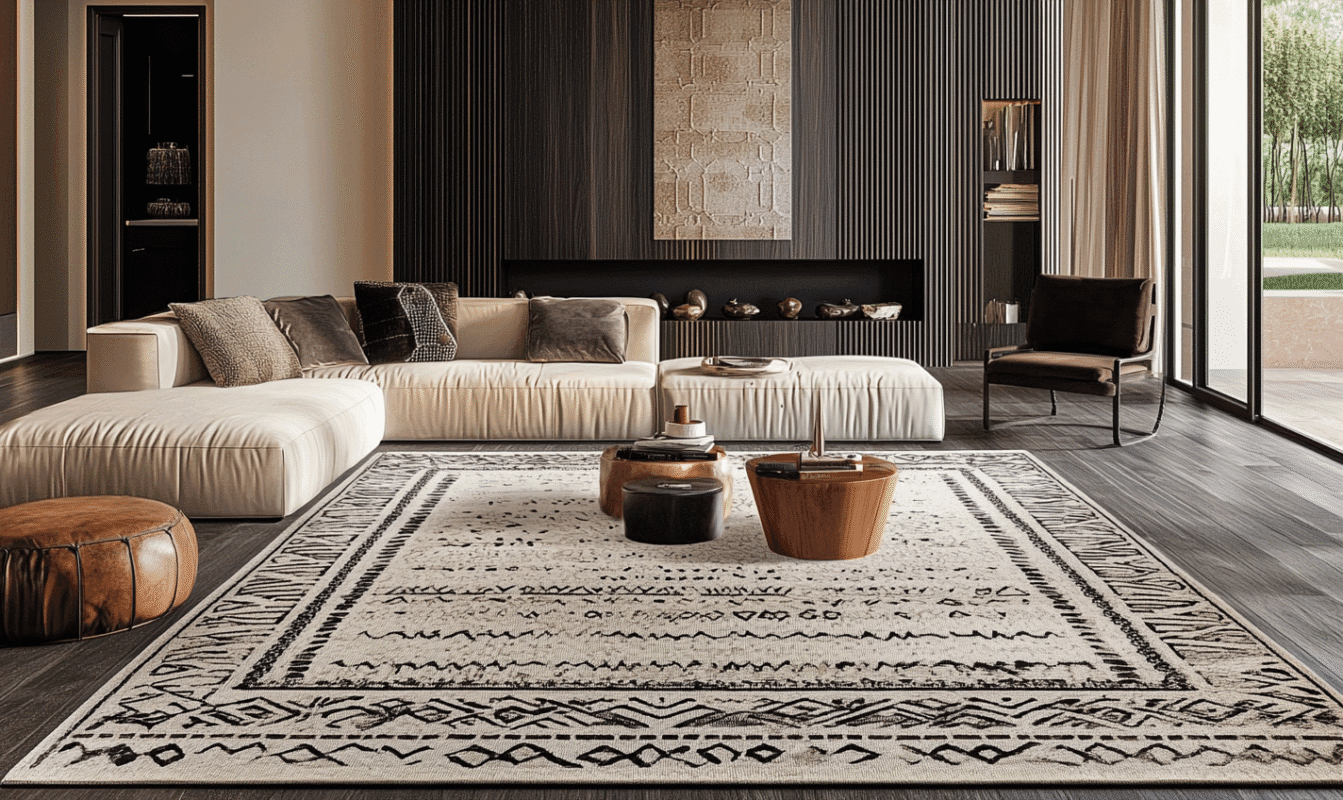
While Persian rugs are known for their rich palettes, the specific colouration should establish dialogue with your existing interior elements. The most sophisticated interiors often feature rugs whose dominant and accent hues create subtle connections to other elements in the space, creating visual coherence without obvious matching.
Functional Considerations
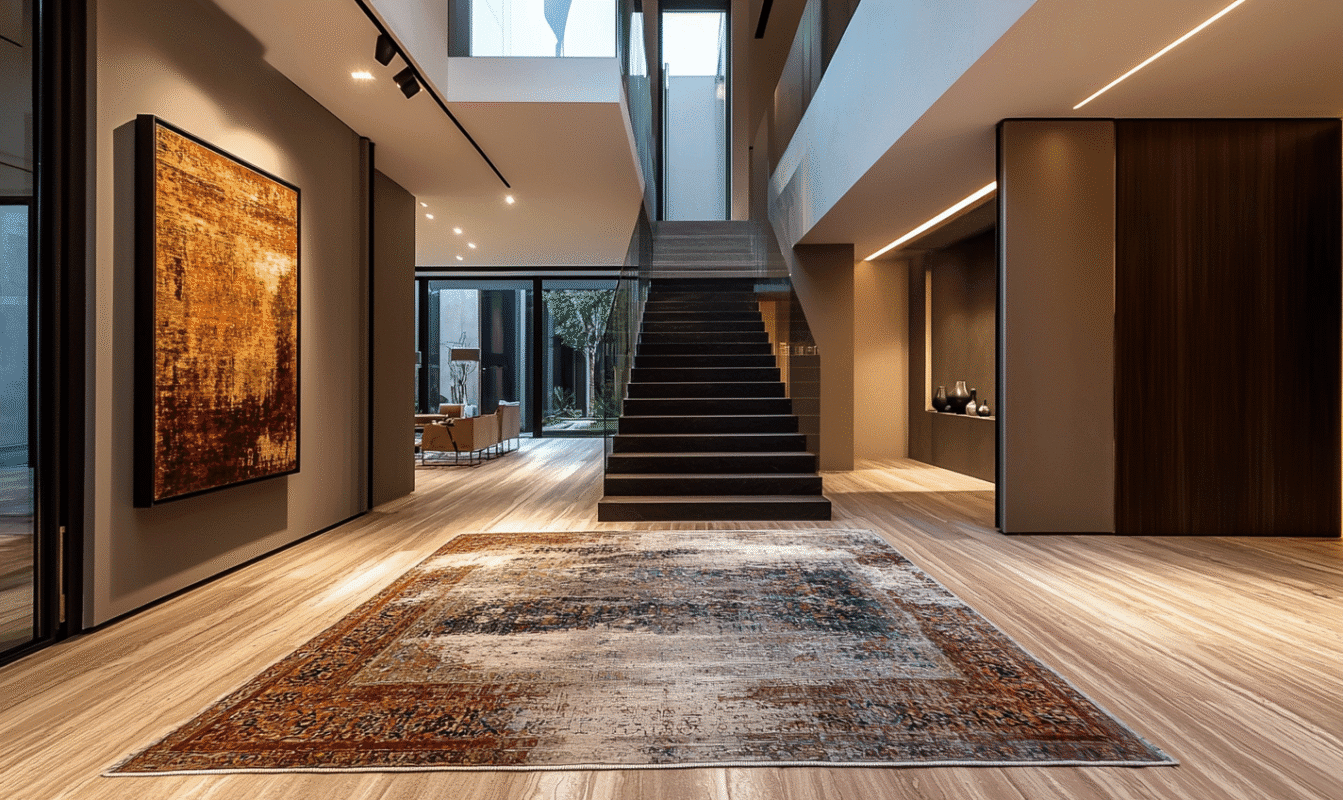
Consider how the pattern’s visual density affects the room’s functionality. Spaces with frequent foot traffic benefit from patterns that disguise wear, while formal areas may showcase more delicate designs with lighter backgrounds that highlight the artistry.
Investment Considerations
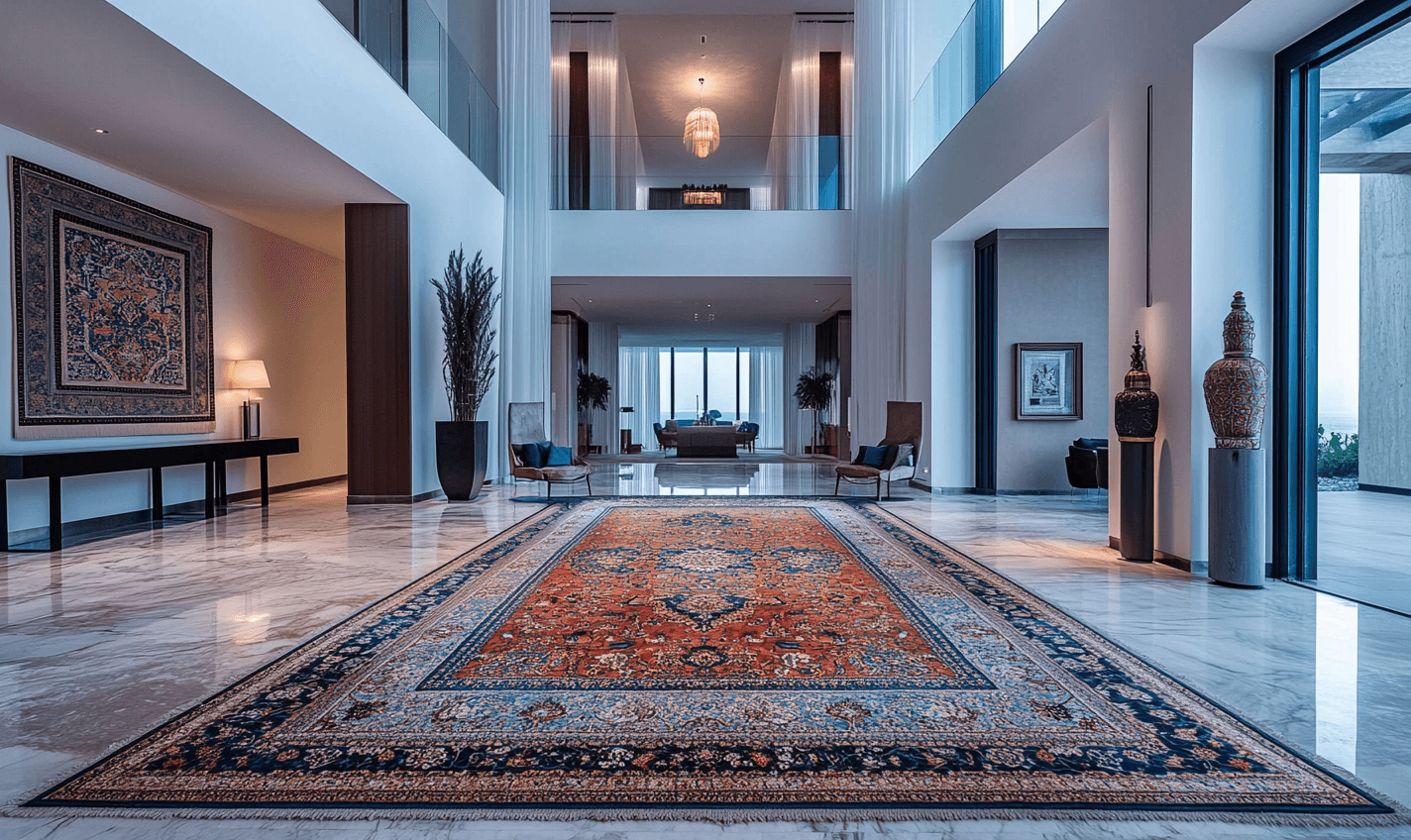
For the discerning collector in Dubai, luxury rugs with traditional Persian rug patterns represent not merely decorative elements but tangible assets. When considering investment value, focus on:
- Provenance and Authentication: Documented history adds significant value to fine examples
- Knot Density: Generally, higher knot counts indicate superior craftsmanship and durability
- Rarity of Design: Unusual or particularly fine examples of classic patterns command premium valuations
- Condition: While patina is valued, structural integrity remains paramount
Authentic Persian rugs with exceptional craftsmanship typically appreciate over time, particularly as traditional techniques become increasingly rare in our mechanised world.
Caring for Your Woven Masterpiece
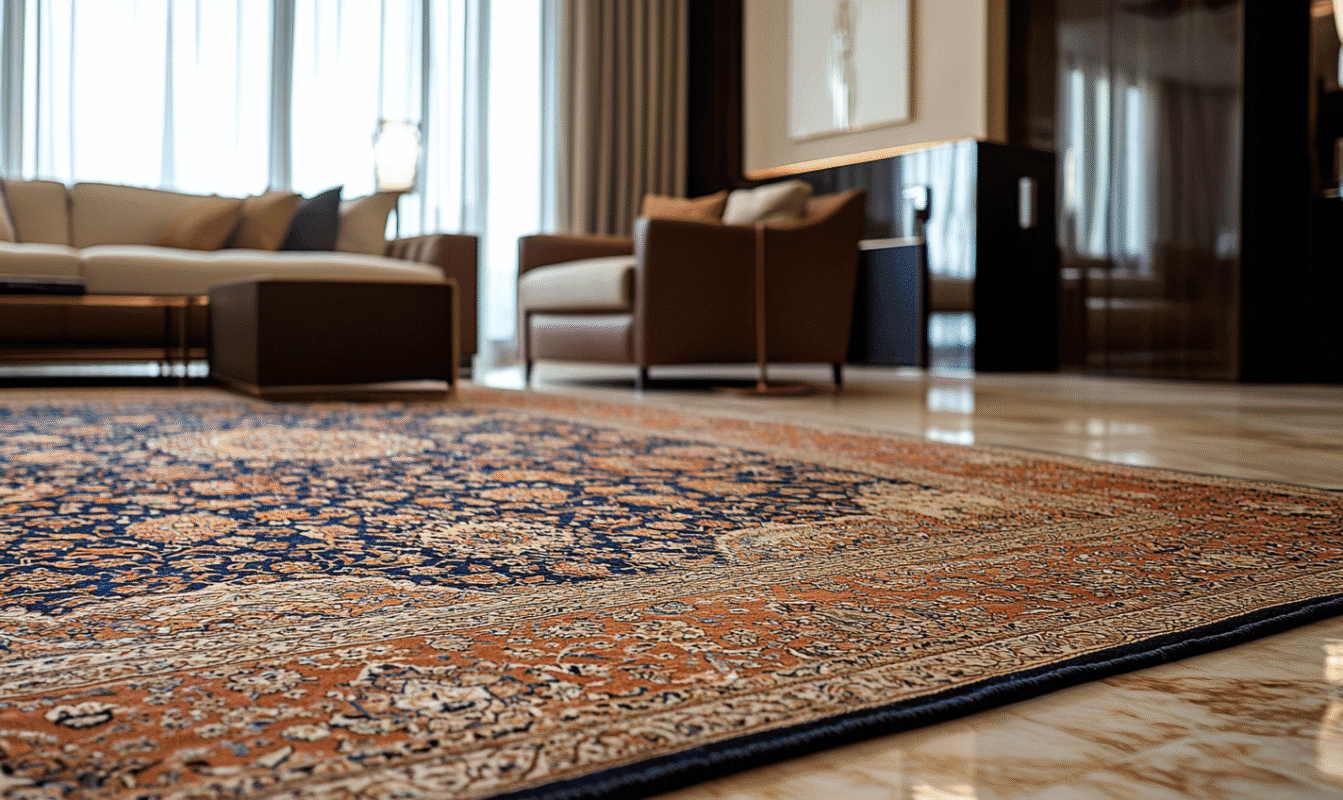
The longevity of a fine textile investment depends significantly on proper maintenance. These heirloom pieces require:
- Rotation every 6-12 months to ensure even wear
- Professional cleaning every 3-5 years, depending on use
- Immediate attention to spills or damage
- Protection from harsh, direct sunlight that can fade natural dyes
With proper care, these remarkable textiles will continue to enhance your interior environment for generations, developing the coveted patina that distinguishes truly fine examples.
Key Takeaways
In Dubai’s luxury residences, where discernment and cultural sophistication are highly valued, Persian rugs offer more than mere floor coverings. They provide a tangible connection to centuries of artistic tradition, a statement of refined taste, and often, a significant investment.
Whether your preference leads you toward classical motifs or contemporary interpretations, the extraordinary craftsmanship embodied in fine Persian rug patterns creates an unparalleled foundation for sophisticated interiors. These textiles speak eloquently of both cultural heritage and personal connoisseurship, qualities that resonate deeply with those who appreciate the intersection of artistry, history, and exceptional quality.
For those who understand that true luxury lies not in transient trends but in timeless excellence, a fine Persian rug remains one of the most compelling expressions of discerning taste.



Get in touch
Want to get in touch? We'd love to hear from you. Email us at [email protected]
Sign Up for Newsletter